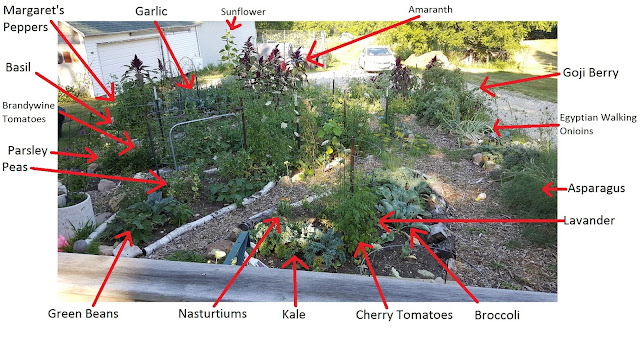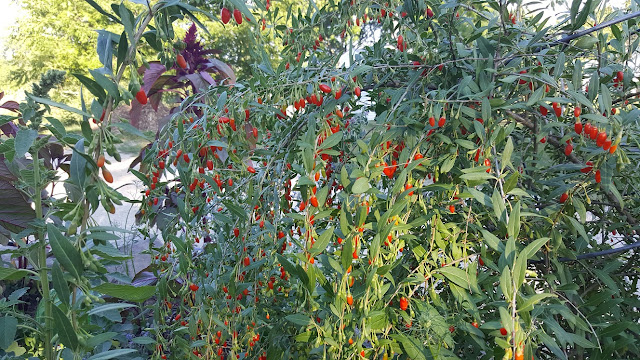* The post below has been sitting in my drafts for the past 8 years. Yea, we've been busy. I figured I'd go ahead and post it as I'm reviewing the past and thinking about the present and planning for the future. More to come.
Unfinished Post from 07/21/16
What can I say, it's been a busy couple of years. Between finding our bearing as new parents, and me embarking on a new career, I simply have not had time and energy to write. I have plenty of inspiration, and I still manage to get out and take pictures on a semi regular basis. But to sit and distill them into something worth reading is a luxury I used to take for granted and can't seem to fit into the schedule anymore.
I have seen quite a few backyard permaculture blogs that went strong for a year or two and then just fizzled out and stopped. It's always a shame because then you don't get to see much of how things work out over time. The long term success or failure of various projects and such. I used to think that the project must have failed, and the blog along with it. But now that I have seen my own humble project run this course, I realize that there can be another reason to stop writing. We can become victims of our own success.
When I started this blog, I had a vision of recording all the little details along the way. Building some sort of database of practical knowledge for myself and others to use. After going at it for a few years now, I have realized that the details simply come too many and too quickly to keep up with recording them, I'm afraid that the best I will be offering moving forward is a broad overview of where we are at and where we are heading. A sprinkling of details that seem important to me at the time and I want to remember later. And hopefully a dash of inspiration to others who wish to walk a similar path.
All that being said, there are some stories and updates to share.
Lets start with that Hugel/swale project: also seen in this post.
Wow, that thing is almost 4 years old now? Let's see how its going....
The Hugel swale thingy is really just the beginning of what we call the Kitchen Garden. Which really deserves it's own post, but time to write is precious. So I'll just do a quick introduction for now.
I have seen quite a few backyard permaculture blogs that went strong for a year or two and then just fizzled out and stopped. It's always a shame because then you don't get to see much of how things work out over time. The long term success or failure of various projects and such. I used to think that the project must have failed, and the blog along with it. But now that I have seen my own humble project run this course, I realize that there can be another reason to stop writing. We can become victims of our own success.
When I started this blog, I had a vision of recording all the little details along the way. Building some sort of database of practical knowledge for myself and others to use. After going at it for a few years now, I have realized that the details simply come too many and too quickly to keep up with recording them, I'm afraid that the best I will be offering moving forward is a broad overview of where we are at and where we are heading. A sprinkling of details that seem important to me at the time and I want to remember later. And hopefully a dash of inspiration to others who wish to walk a similar path.
All that being said, there are some stories and updates to share.
Lets start with that Hugel/swale project: also seen in this post.
Wow, that thing is almost 4 years old now? Let's see how its going....
Some people might call it messy, but I think it's awesome. At this point we have completely abandoned the concept of vegetable gardens, or herb gardens, or flower gardens. It is all just garden. It's polyculture. It's a big plant party, and we get to play matchmaker as we learn their languages and begin to understand the relationships they form with each other. When we find great friendships, there is a synergy that reverberates through the gardens. In that synergy is where we can find success without relying on any form of chemical assistance.
The labels above give a sense of the types of plants in this garden, but there are many more. The spring bulbs are already hidden. Dandelions, plantains, are hidden throughout and the bind weed ever threatens to strangle it all.
The Hugel swale thingy is really just the beginning of what we call the Kitchen Garden. Which really deserves it's own post, but time to write is precious. So I'll just do a quick introduction for now.
Above is just a small sampling of the plants within. The Chicago Hardy Fig that we planted out on the corner to commemorate our daughter's first birthday is doing quite well after overwintering under a pile of leaves.
The Goji berry was extra abundant this year. The humming birds really seem to love it's Spring flowers.
The Goji berry was extra abundant this year. The humming birds really seem to love it's Spring flowers.
I am particularly proud of the Margaret's Peppers this year. We have been saving the seed since 2009 from a couple of plants my uncle gave me from seed he got from Jung.
The Egyptian Walking Onions I got as tiny top sets from Anna at Walden Effect blog are awesome! They have fully perennialized and even come back up in spots I would have sworn that they were all dug out of. They are a very strong (burn your eyes out) kind of onion, and not terribly large. But then, a little goes a long way. They braid nicely to hang and use throughout the winter, and I was especially proud this year when we had fresh spring onions alongside some from last years braid in a large pot of stock we made this spring. Thus completing the cycle on a full years worth of homegrown onions.
I saved the biggest bulbs and planted therm here in the kitchen garden with some fresh mushroom compost last fall. I cut the top sets off to try and stimulate larger bulb production.




